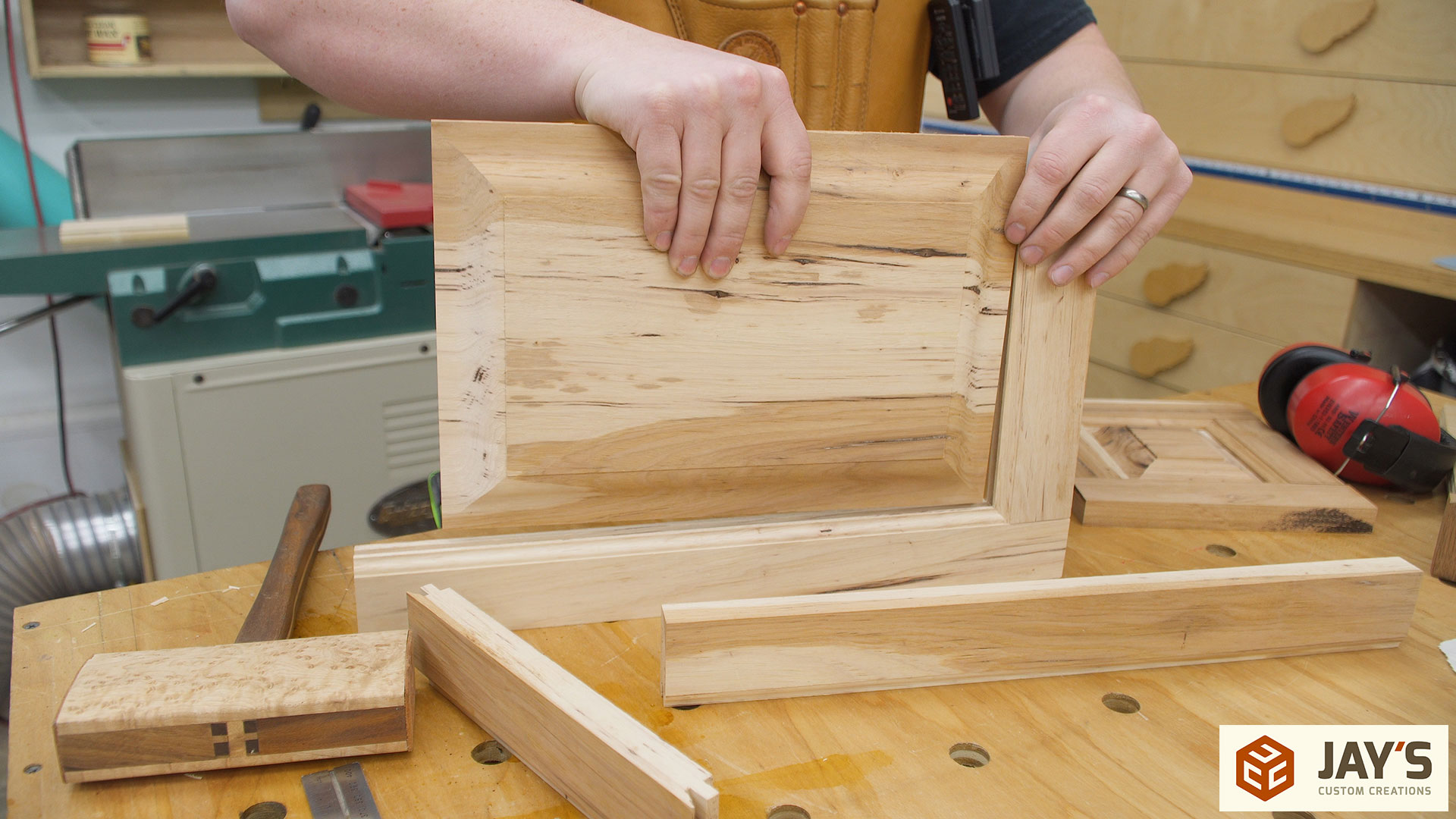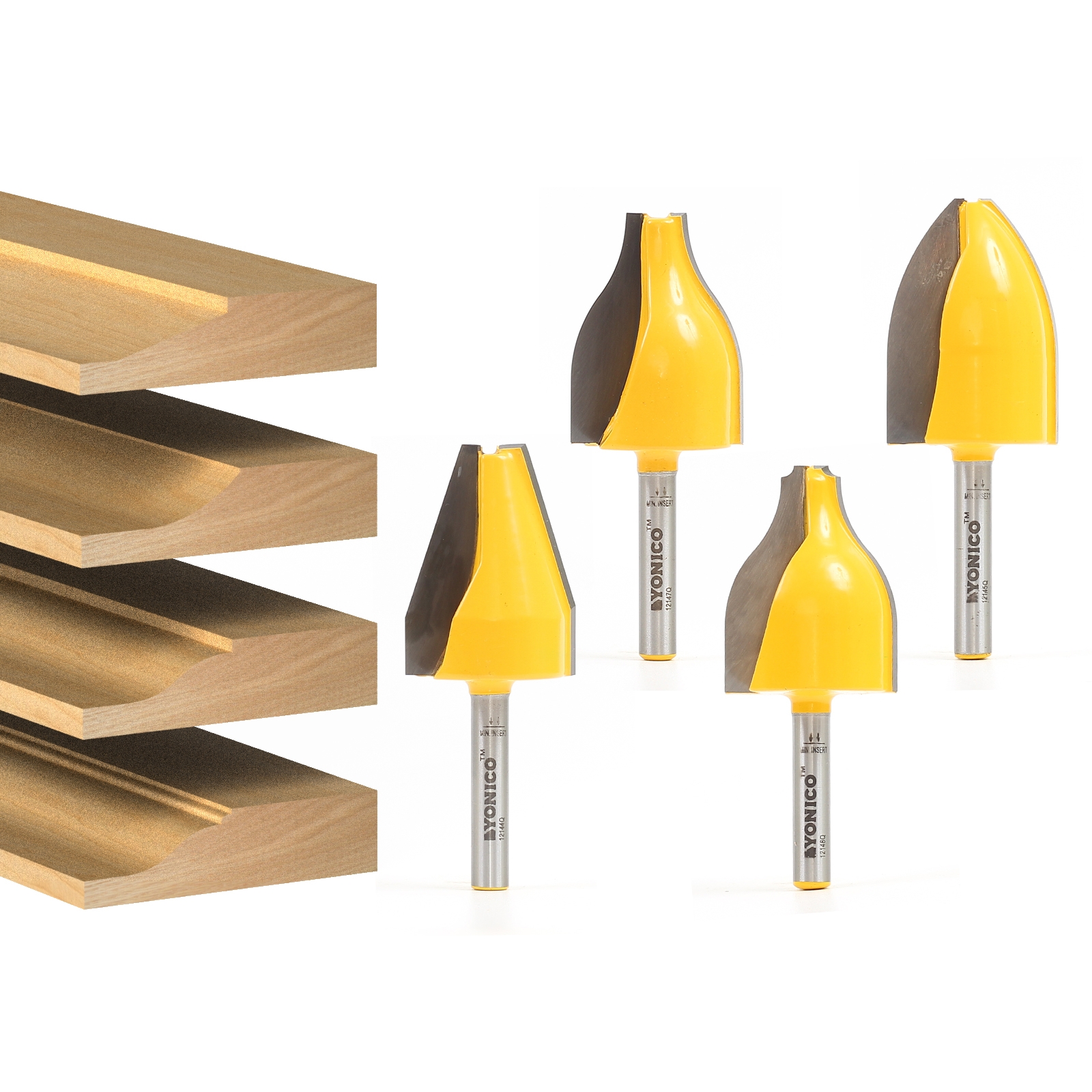Understanding Raised Panel Cabinet Door Router Bit Sets

Creating beautiful raised panel cabinet doors requires precision and the right tools. A raised panel cabinet door router bit set provides the necessary bits to achieve a professional finish. Understanding the function of each bit and the materials they work best with is crucial for successful results.
Types of Raised Panel Router Bits
A typical raised panel router bit set includes several bits, each designed for a specific stage in the process of creating a raised panel. These bits typically include a panel raising bit, a chamfer bit, and possibly a decorative edge bit. The panel raising bit is the workhorse, creating the recessed panel itself. The chamfer bit creates a subtle bevel on the edges of the panel, softening the transition between the raised panel and the frame. A decorative edge bit adds additional stylistic details. The exact composition of the set will vary by manufacturer.
Function of Each Bit
The panel raising bit is the most important. It’s a bearing-guided bit with a profile that matches the desired shape of the raised panel. It’s used to cut the recess in the door’s stile and rail to accommodate the panel. The router’s bearing rides along the edge of the stile and rail, ensuring consistent depth and a clean cut. The chamfer bit, also bearing guided, is used to create a slight bevel on the edges of the panel, both inside and outside, which softens the appearance and reduces the harshness of the transition. A decorative edge bit might be included to add a decorative profile to the edges of the panel or the frame itself.
Suitable Materials
These router bits can be used with a variety of materials, but some are better suited than others. Hardwoods like oak, maple, and cherry offer a beautiful and durable finish, but require sharp bits and careful feeding due to their density. Softwoods such as pine and fir are easier to route but may be more prone to tear-out. MDF (Medium-Density Fiberboard) is a popular choice for its affordability and ease of routing, but it can be prone to chipping if not handled carefully. The choice of material often depends on the desired aesthetic and budget.
Safety Precautions When Using Raised Panel Router Bits
Using router bits requires caution. Ignoring safety measures can lead to serious injury.
| Safety Measure | Description | Importance | Example |
|---|---|---|---|
| Secure Workpiece | Firmly clamp the workpiece to the router table or use a suitable jig to prevent movement. | Prevents kickback and ensures clean cuts. | Using clamps to hold the door firmly in place while routing. |
| Use Proper Speed | Select the appropriate router speed for the material being used. Too fast can lead to burning, too slow to tear-out. | Ensures a clean, smooth cut and prevents damage to the bit or workpiece. | Consulting the router bit manufacturer’s instructions for recommended speeds for various wood types. |
| Use Safety Glasses and Hearing Protection | Always wear safety glasses to protect your eyes from flying debris and hearing protection to reduce noise exposure. | Essential for preventing eye injuries and hearing damage. | Wearing ANSI-approved safety glasses and hearing protection earmuffs. |
| Sharp Bits | Use sharp router bits. Dull bits require more force, increasing the risk of kickback and tear-out. | Reduces the risk of accidents and ensures a clean, accurate cut. | Replacing the bits regularly or sharpening them professionally. |
Techniques for Using Raised Panel Cabinet Door Router Bit Sets

Creating raised panel cabinet doors involves precision and a good understanding of your tools. This section details the techniques for using a raised panel cabinet door router bit set effectively, covering various panel profiles and crucial adjustments for achieving professional results. Proper technique ensures clean cuts, accurate dimensions, and a high-quality finished product.
Preparing the Door and Router
Before beginning the routing process, ensure your cabinet door is properly prepared. This includes accurately cutting the door to its final dimensions, ensuring the surface is smooth and free from imperfections, and securely clamping the door to your router table or workbench. The stability of the workpiece is paramount for consistent results. The router itself should be in good working order, with a sharp bit and properly adjusted depth stop. Using a fresh, sharp bit is critical for clean cuts and prevents tear-out.
Step-by-Step Raised Panel Door Creation
- Marking and Positioning: Accurately mark the location of the panel groove on the door stile and rail. Use a marking gauge or a combination square for precise measurements. This step ensures the panel fits snugly.
- Routing the Panel Groove: Using the appropriate router bit from your set (typically a rabbeting bit), create the groove to receive the raised panel. Make multiple passes to achieve the desired depth, carefully adjusting the depth stop after each pass. Avoid forcing the router; let the bit do the work.
- Shaping the Raised Panel: Select the appropriate router bit for your desired raised panel profile (flat, ogee, beaded, etc.). Again, make multiple passes to achieve the desired depth and profile, adjusting the depth stop as needed. The panel should fit snugly into the groove created in the previous step.
- Testing and Adjustment: Before proceeding, test-fit the panel in the groove. Any adjustments to the depth or profile should be made at this stage. A slight adjustment can significantly improve the fit.
- Gluing and Clamping: Apply wood glue to the edges of the panel and carefully insert it into the groove. Use clamps to ensure a tight, even fit. Allow the glue to dry completely before removing the clamps.
- Finishing: Once the glue is dry, sand the door smooth and apply your chosen finish. This step enhances the appearance and protects the wood.
Achieving Different Raised Panel Profiles
Different raised panel profiles are achieved by using different router bits within the set. A flat panel bit creates a simple, recessed panel. An ogee bit creates a more ornate, curved profile, while a beaded bit creates a raised panel with a decorative beading along the edges. The choice of bit depends entirely on the desired aesthetic. For example, a simple flat panel might suit a more traditional design, while an ogee profile might be better suited for a more ornate style. The bit selection directly impacts the final appearance of the cabinet door.
Adjusting Router Depth of Cut, Raised panel cabinet door router bit set
Precise depth adjustment is critical for achieving the desired panel depth and preventing tear-out. Most routers have a depth stop mechanism that allows for precise control. It’s recommended to make multiple shallow passes rather than one deep pass. This technique helps prevent the router bit from binding or causing damage to the workpiece. For instance, if you need a 1/2″ deep groove, making four passes of 1/8″ each is safer and more accurate than trying to achieve the full depth in a single pass. Always double-check the depth setting before each pass to ensure consistency.
Troubleshooting and Maintenance of Router Bits

Proper maintenance and troubleshooting are crucial for extending the lifespan of your raised panel router bits and ensuring consistently clean cuts. Neglecting these aspects can lead to damaged bits, ruined projects, and wasted time and materials. Understanding common issues and implementing preventative measures will significantly improve your woodworking results.
Common Problems and Their Prevention
Several problems commonly arise when using raised panel router bits. Chipping, tear-out, and uneven cuts are among the most frequent. Chipping, usually on the workpiece, often occurs when using hardwoods or when the feed rate is too fast. Tear-out, where the wood fibers are ripped away, is often a result of insufficient support for the wood being routed or using dull bits. Uneven cuts, characterized by inconsistencies in depth or profile, might be caused by improper bit setup, inconsistent feed rate, or a damaged bit.
To prevent these problems, several strategies can be employed. Choosing the right material for the project is vital. Softer woods are less prone to chipping than hardwoods. Using a slower feed rate allows the bit to cleanly cut the material without excessive force. Using appropriate router speed for the material and bit is also crucial. For hardwoods, consider using a push block and feather boards to provide additional support and prevent tear-out. Employing a sharp bit is paramount, as a dull bit will increase the likelihood of all three problems.
Bit Sharpening and Material Selection
Maintaining the sharpness of your router bits is key to achieving precise and clean cuts. A dull bit will not only lead to poor results but will also increase the risk of breakage. While some woodworkers sharpen their own bits, it’s often more practical and cost-effective to send them to a professional sharpening service. They have the specialized equipment and expertise to achieve the optimal sharpness.
The selection of materials also impacts the outcome. Hardwoods, such as oak and maple, are more prone to chipping and tear-out than softer woods like pine or poplar. When working with hardwoods, using a slower feed rate, sharper bits, and adequate support is especially important. Consider pre-drilling pilot holes for particularly hard materials to reduce the load on the bit.
Maintaining Bit Sharpness and Longevity
Regular inspection of your router bits is vital. Examine them closely after each use for any signs of damage, such as chipping, cracks, or dullness. Even minor damage can affect the quality of your cuts. Cleaning the bits after each use, removing any wood chips or resin buildup, will prolong their lifespan. Always store your bits in a clean, dry place to prevent rust and corrosion. Consider using a bit case or storage system designed specifically for router bits to prevent damage during storage and transportation.
Proper Storage and Care
Proper storage is essential for maintaining the longevity and performance of your router bits. After each use, thoroughly clean the bits to remove any sawdust, resin, or other debris. A compressed air canister is helpful for this task. Wipe the bits down with a clean cloth and a light oil to prevent rust.
Store your router bits in a dry, climate-controlled environment. Avoid exposing them to extreme temperatures or humidity, as these can cause damage and corrosion.
Use a dedicated storage case or a protective container to prevent damage during storage and transportation. This will help to avoid chipping or dulling of the bits.
Never leave router bits loose in a toolbox or drawer. This can lead to damage and dulling of the cutting edges.
